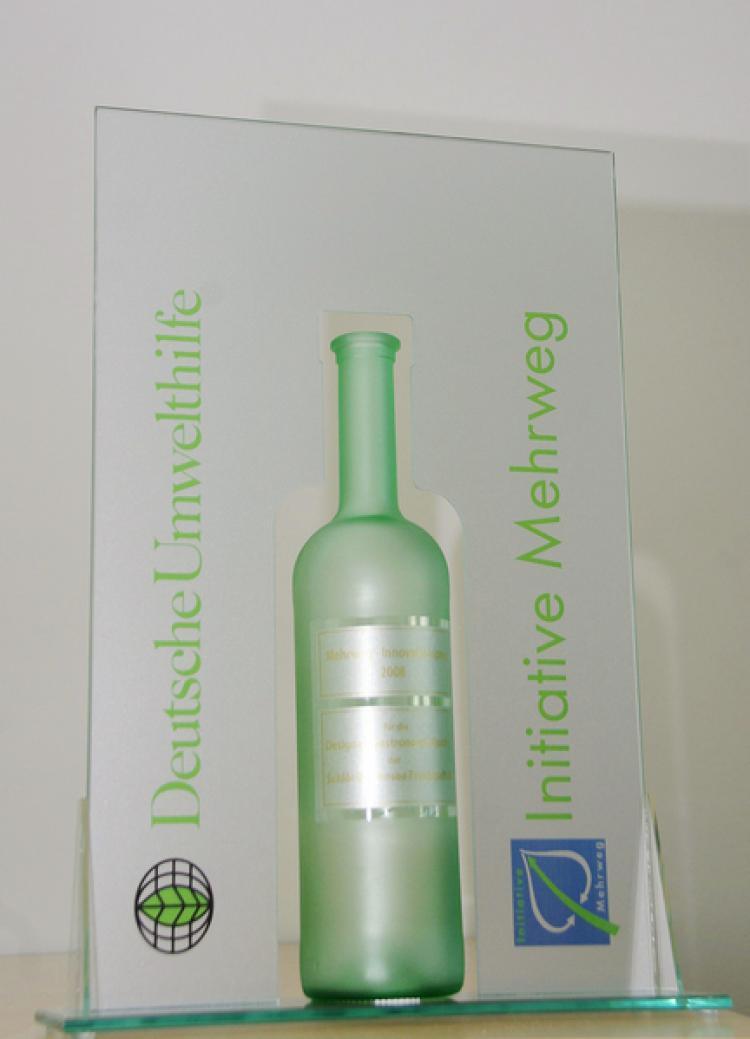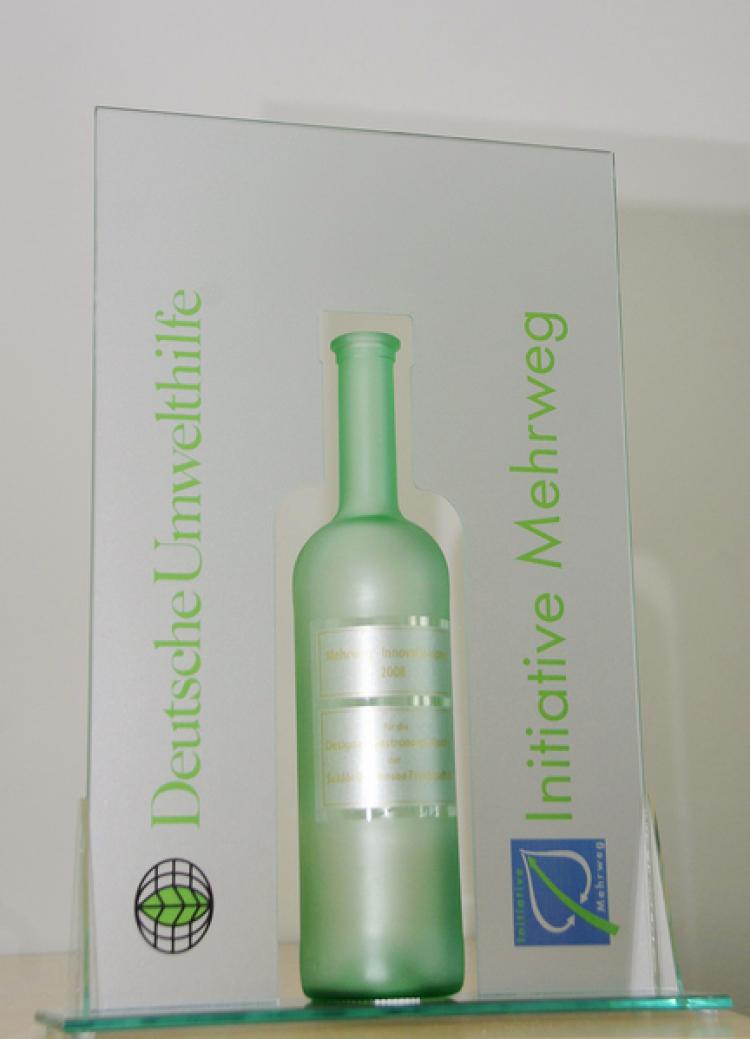If all soft drinks were packaged in reusable containers, in one year we could prevent 1.1 million tons of CO2 emissions from entering the environment. These figures are calculations put forward by the German Packaging Institute in Berlin.
Mr Clemens Stroetman, administrator for Initiative Mehrweg (SIM), quoted from Poet Ludwig Uhland’s ballad, “Glass is the Earth’s Pride and Fortune,” as he awarded the 2008 innovative prize for reuse product design. The prize went to the Schloer Bodensee Fruchtsaft AG [the Schloer Lake Constance Fruit Juice Corporation]. The company had developed an aesthetically pleasing but practical glass bottle, lighter in weight and more compact.
Choices and Environmental Protection
The award’s sponsor, Deutsche Umwelthilfe (DUH) [German Association to Help the Environment] and SIM, hope the hotel and restaurant industry will embrace the use of reuseable container designs. The bottle from Lake Constance is one example - from millions of other glass bottles - of German regional and worldwide renewable resources for the beverage industry.
Juergen Resch, CEO of the DUH, commented during the prize awards ceremony in Berlin: “Even an ecology-friendly design and functional system still has room for optimization. That’s why innovations and creativity in the glass container industry are important. We wish to acknowledge creativity in the field of reuseable designs, especially those that help to protect the environment. Hopefully these designs will be the basis from which large and small enterprises do their work in the multifarious German beverage industry, thereby becoming unique worldwide.”
Mr Stoetmann highlighted the ability of glass to satisfy production demands, because the raw materials are readily available and are a virtually permanent renewable resource. “Tradition and innovation enjoy a unique partnership in the glass industry, but it needs nurturing and constant innovations.” The Schloer-designed bottle is a positive example of innovation and flies in the face of throw-away containers.
Mr Frank Einsiedler, a board member of the Schloer Bodensee Fruchtsaft AG, said during his acceptance speech: “In particular highly delicate fruit juices need an especially good container. That’s why we created the new designer bottle, to introduce to the modern ”throw away” market a different option.
DUH and SIM appeal to all bottling companies and logistics managers to nurture the reuseable container concept and to develop further innovations. Submissions for next year’s awards are requested in glass container designs that optimize system concepts and marketing strategies to save the environment.
Note: Reuse denotes that the glass bottle, in this case, is inspected, cleaned and re-labeled. In some cases, its appearance may be modified, meaning frosting the glass or decorative etching. Recycling refers to the reprocessing of the base materials to produce new products.







